

My Ghosty Gals: The Story Of Irene Shaw nee Cummings
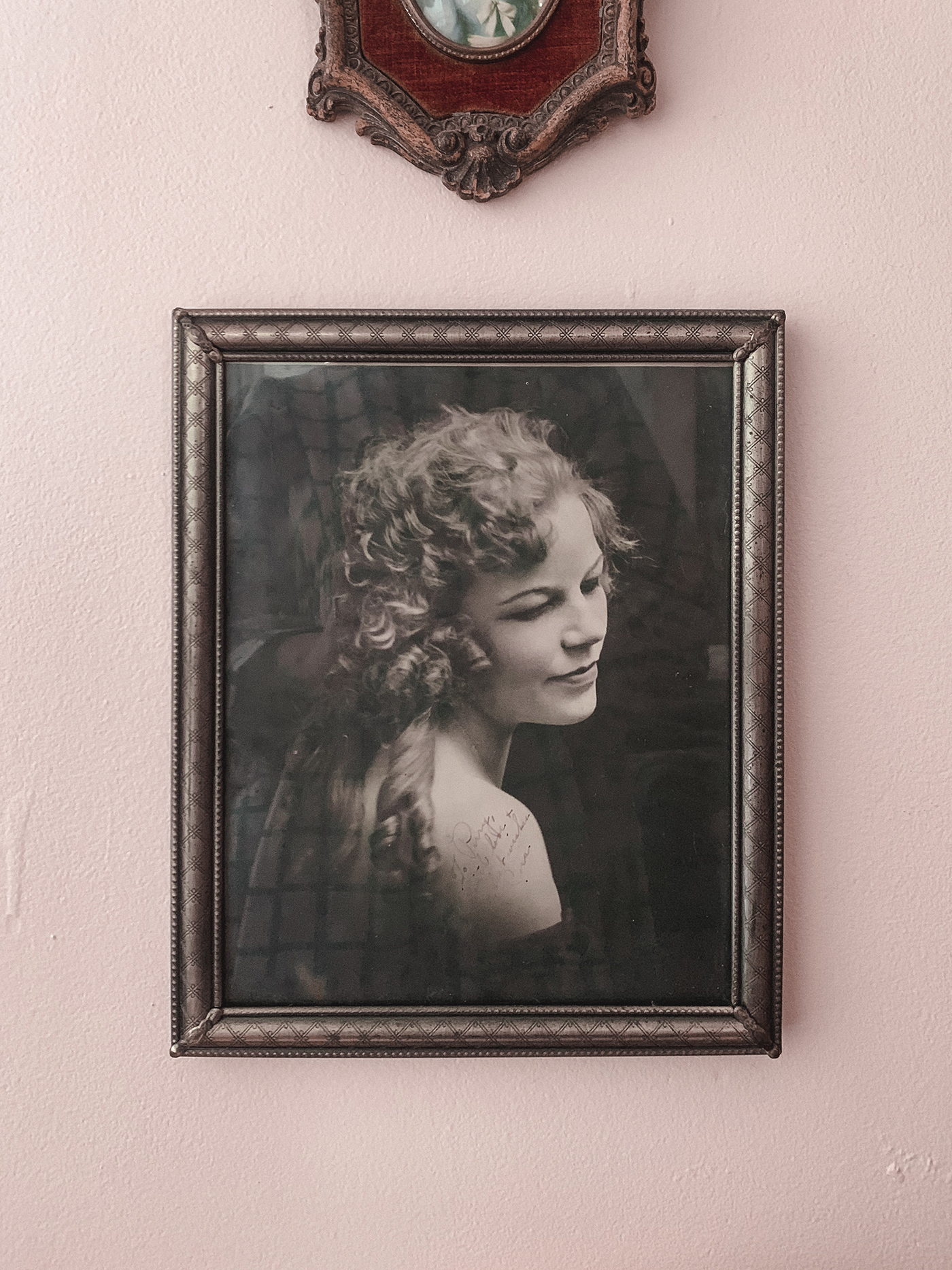
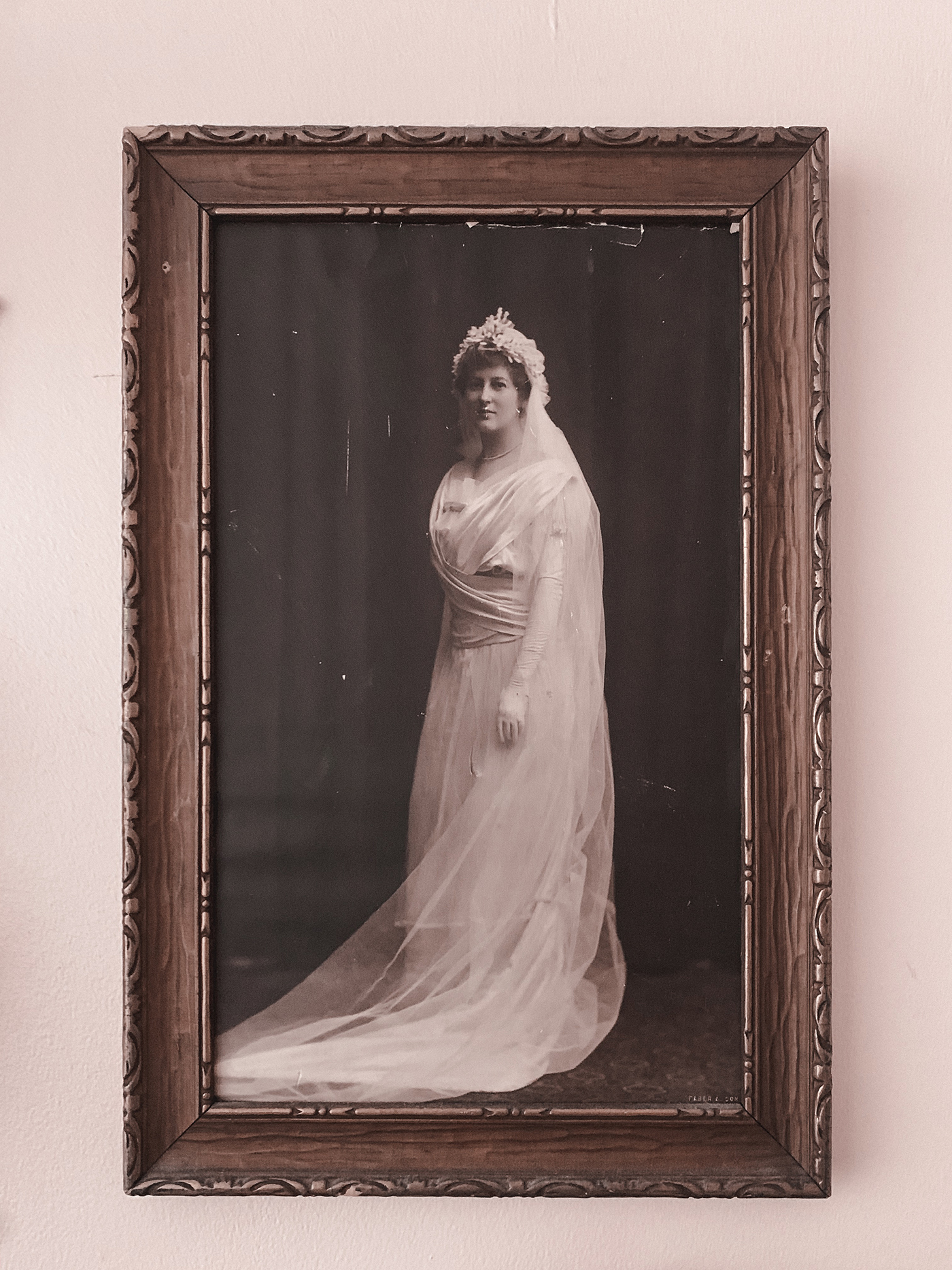
I call these old portraits “my ghosty gals.” Some people find them creepy, but I find them comforting and familiar, like I somehow knew them in a past life.
The only one I truly know anything about is Irene Shaw nee Cummings, hanging at the top left of my wall. While digging through a stack of old portraits in a tiny Brooklyn antique shop, I became completely mesmerized by this portrait of a glamorous woman in the 1920s and had to bring her home. She was my Jane Seymour of Somewhere In Time. I wanted to know everything about her.
I loved her look, but it was the cagey note that particularly intrigued me:
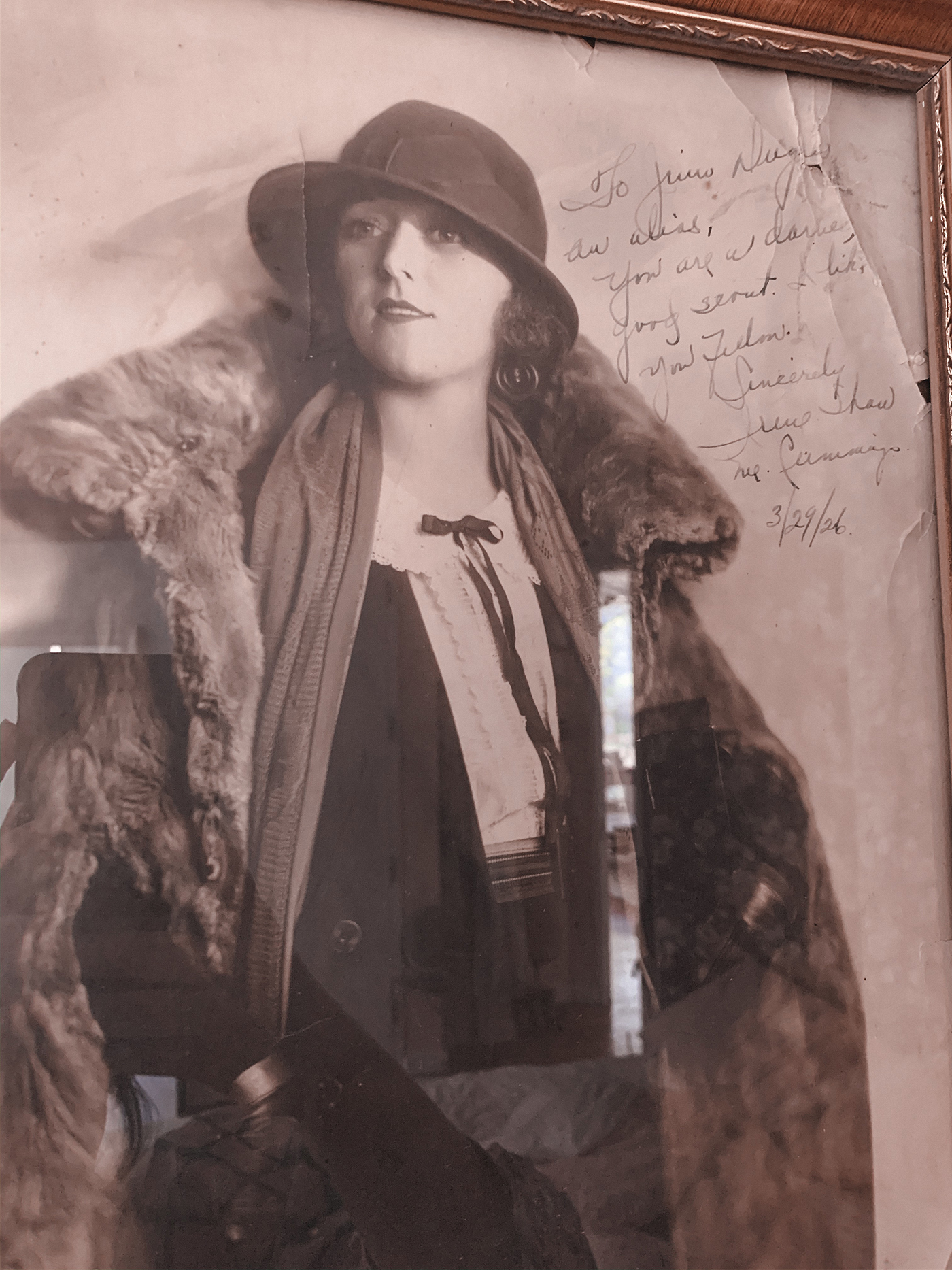
“To Julius Duggar, an alias,
You are a darned good scout.
I like you, fellow.
Sincerely, Irene Shaw nee Cummings
3/29/26”
For years, I thought it said “secret” not “scout” — and I made up a story in my head of a vaudeville star who was married to the powerful and controlling producer of her show, fell in love with a kind stagehand, but couldn’t leave her husband for fear of ruining her career. A love affair ensued, naturally, and without going too far into my unwritten screenplay, I’ll just tell you that it was a complete tearjerker that ended with a stoic Irene choosing the stage over the love of her life, who was left waiting for her at the train station. Yes, sometimes I have too much time on my hands and make up stories about strangers who have long since passed.
And sometimes, I take it a step further and play detective.
Back when I was sure this was a private note between star crossed lovers, I decided I would keep her secret. I didn’t want her relatives finding out anything she intended to keep hidden. So tracking down her family was out of the question. However, I’ve since corrected myself: I’m pretty sure it says “scout” and not “secret” (let me know what you think it says!), which makes it highly possible it was a little more of an innocent relationship than my original assumption. But still, why the alias?
A quick little search led me to find that I wasn’t far off:
Irene Shaw Cummings was a vaudeville performer. Instead of being married to a producer, she was married to the star, Roy Cummings. A quick search of newspaper archives from the teens through the 30s demonstrates his successful comedic career, with Irene joining his act in the 20s (I found many write ups of their show One Afternoon). He’s often described as a “star of both stage and screen” — but I had difficulty finding evidence of movie credits (some of his larger theater credits can be found on playbill). However, it should be noted that many early films from that time are considered lost.
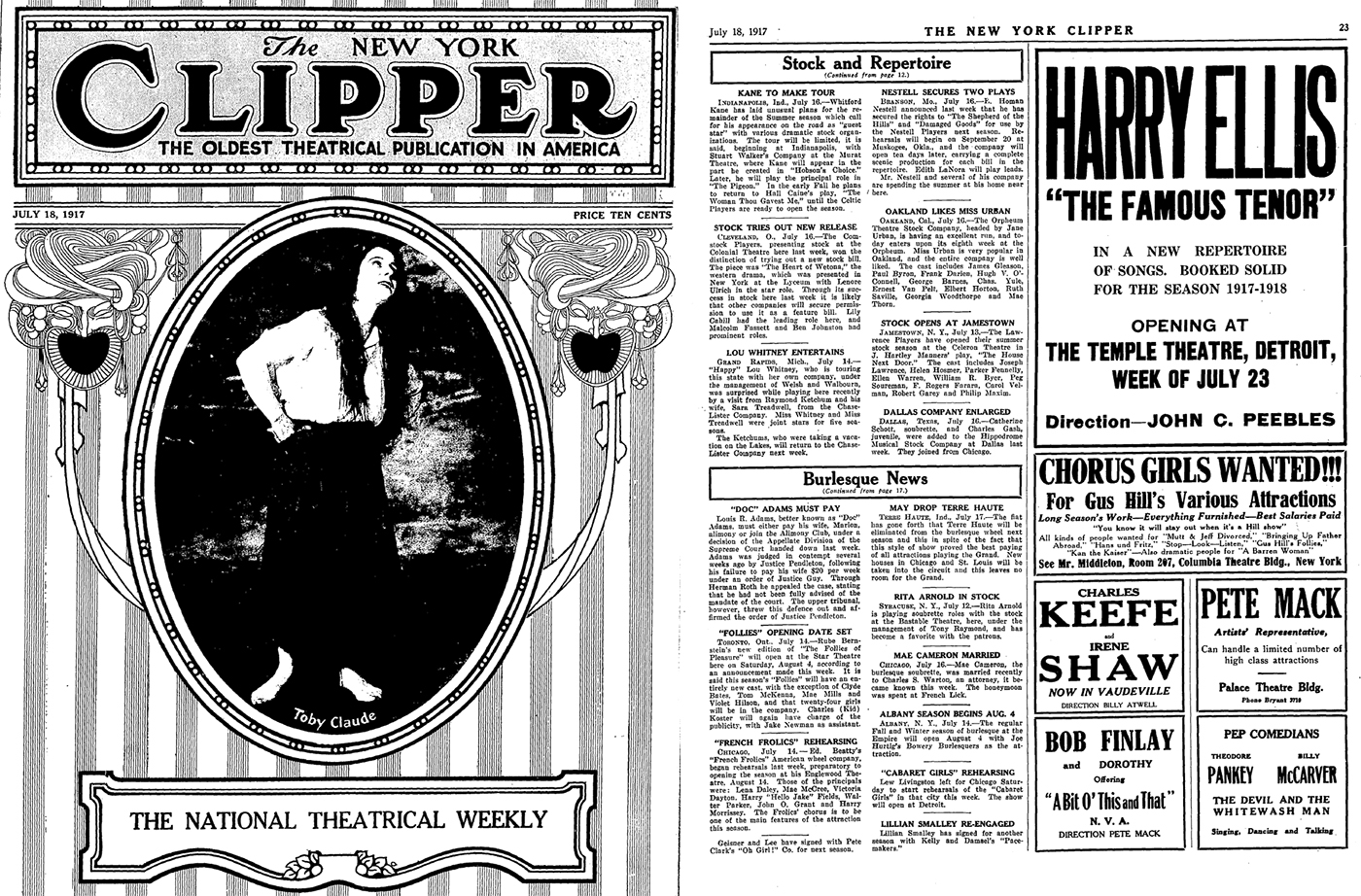
I did find a few articles and ads for her performances before Roy, but it seems like much of her career was as a supporting actress to his madcap starring roles. Or as one half of their comedic duo. I even found a snippet in a book that mentioned President Coolidge enjoying one of their shows.
So, I was right about something: Irene Shaw Cummings was a vaudeville performer. And her career did largely depend on her relationship. But the rest of what I could find was much more interesting than a possible affair. Though their vaudeville contributions seemingly received plenty of press, they’re a footnote to their scandalous legacy as 2/3 of a love triangle. It was national news in 1923. Printed and reprinted in countless papers with slight variations to their story.

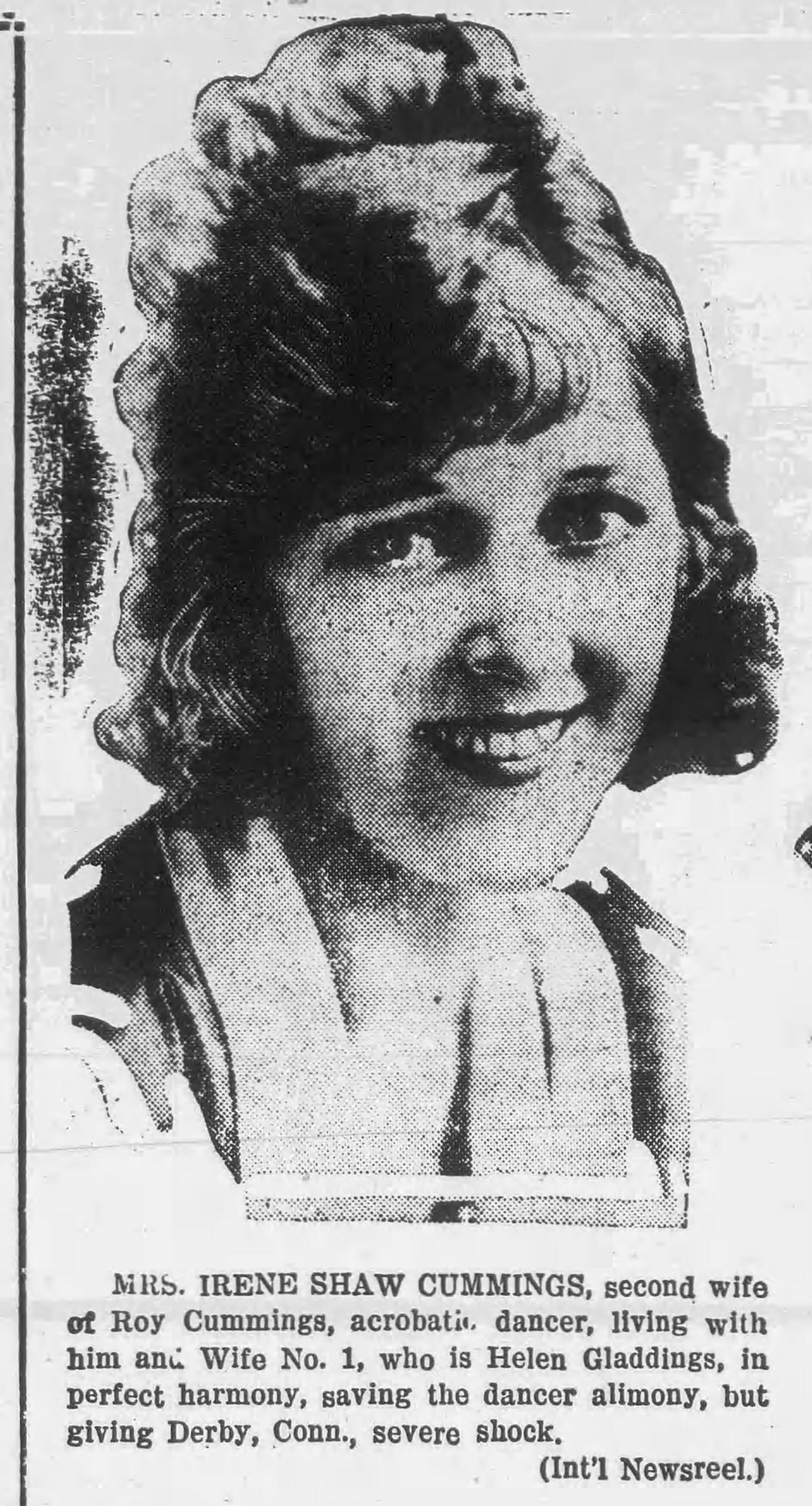
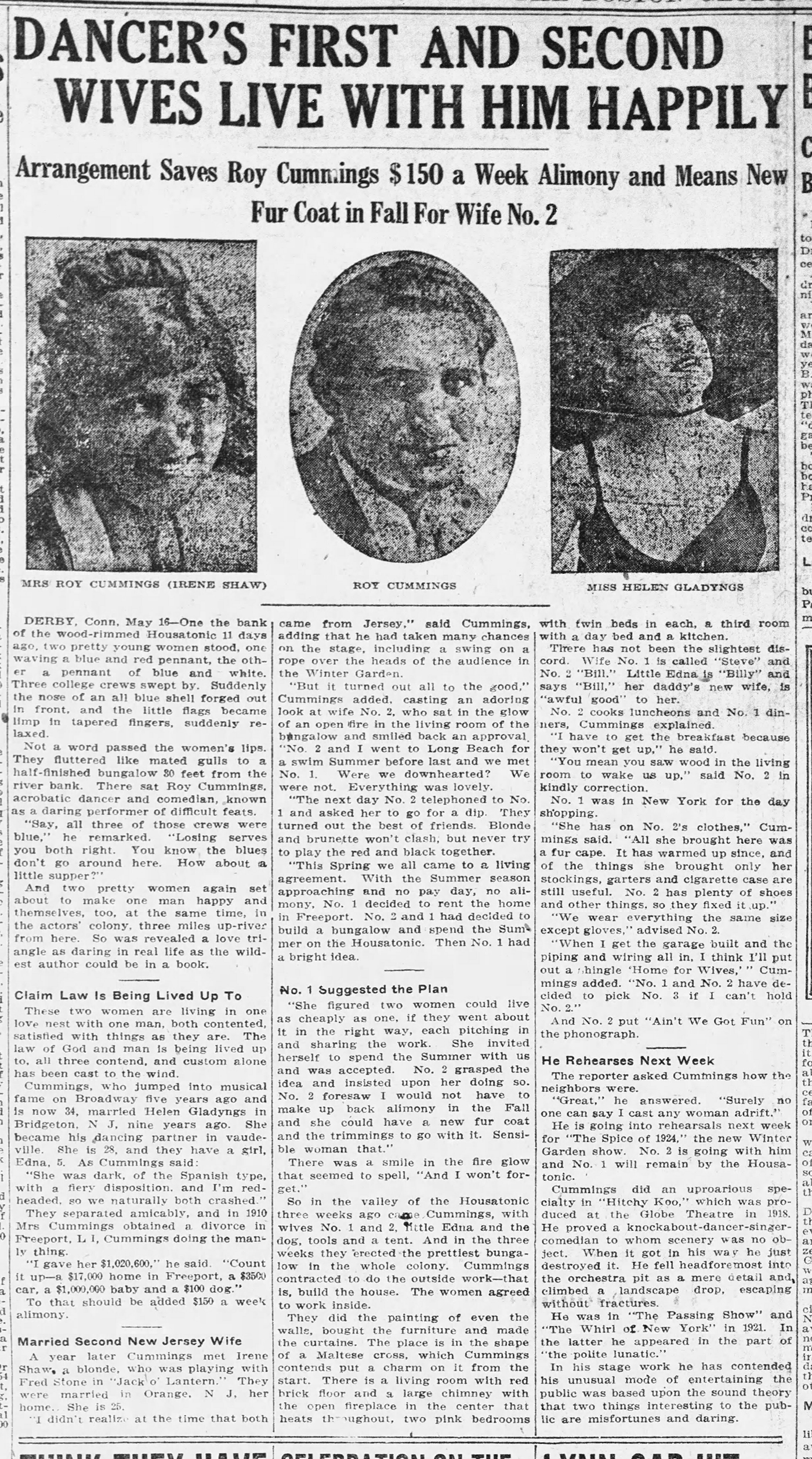
In most articles, their union is painted as a happy one:
Roy and his wife Helen have a child together, then get a divorce. He meets Irene, and she and his ex form a fast friendship. They all move in together because it’s economical and good for their daughter. Helen and Irene share their clothes, the household duties, and raising little Edna — and affectionately refer to one another as Billy and Steve. Roy, in turn, gets to save on alimony. Some articles (like the one below) are painted with a slightly more sensationalized tone.
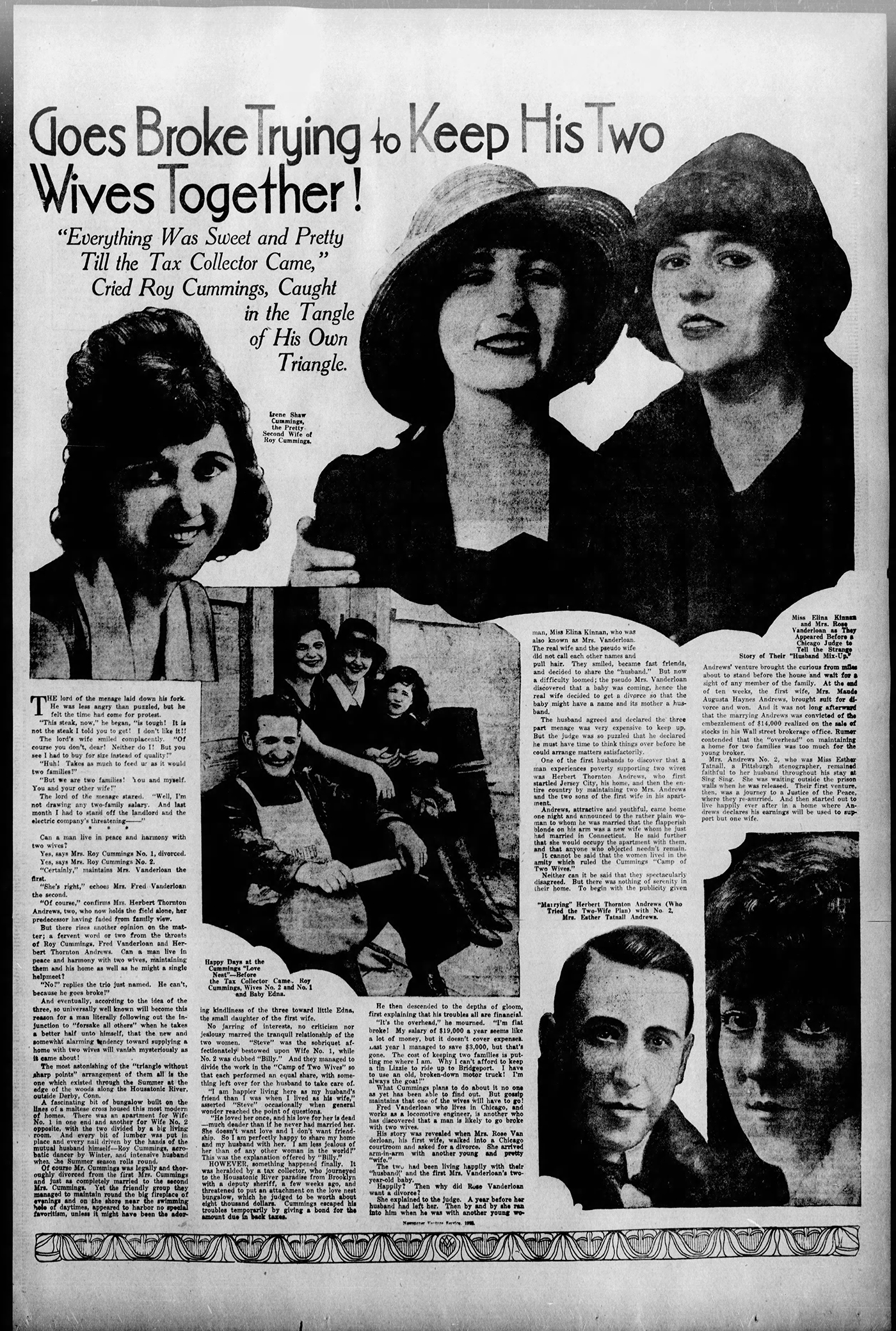
While it does seem like — at least for a time — wife 1 and 2 were truly friends, eventually Roy and Irene left the Northeast for Los Angeles. I imagine this is where the “and screen” part came in for Roy. And it seems that Helen and their daughter stayed back East. However, after their “Love Nest” headline swept the nation and a smattering of articles about their vaudeville act were printed for the next few years, the next major national news for Irene Shaw Cummings was probably what you’d expect: their spectacle of a divorce in 1928.
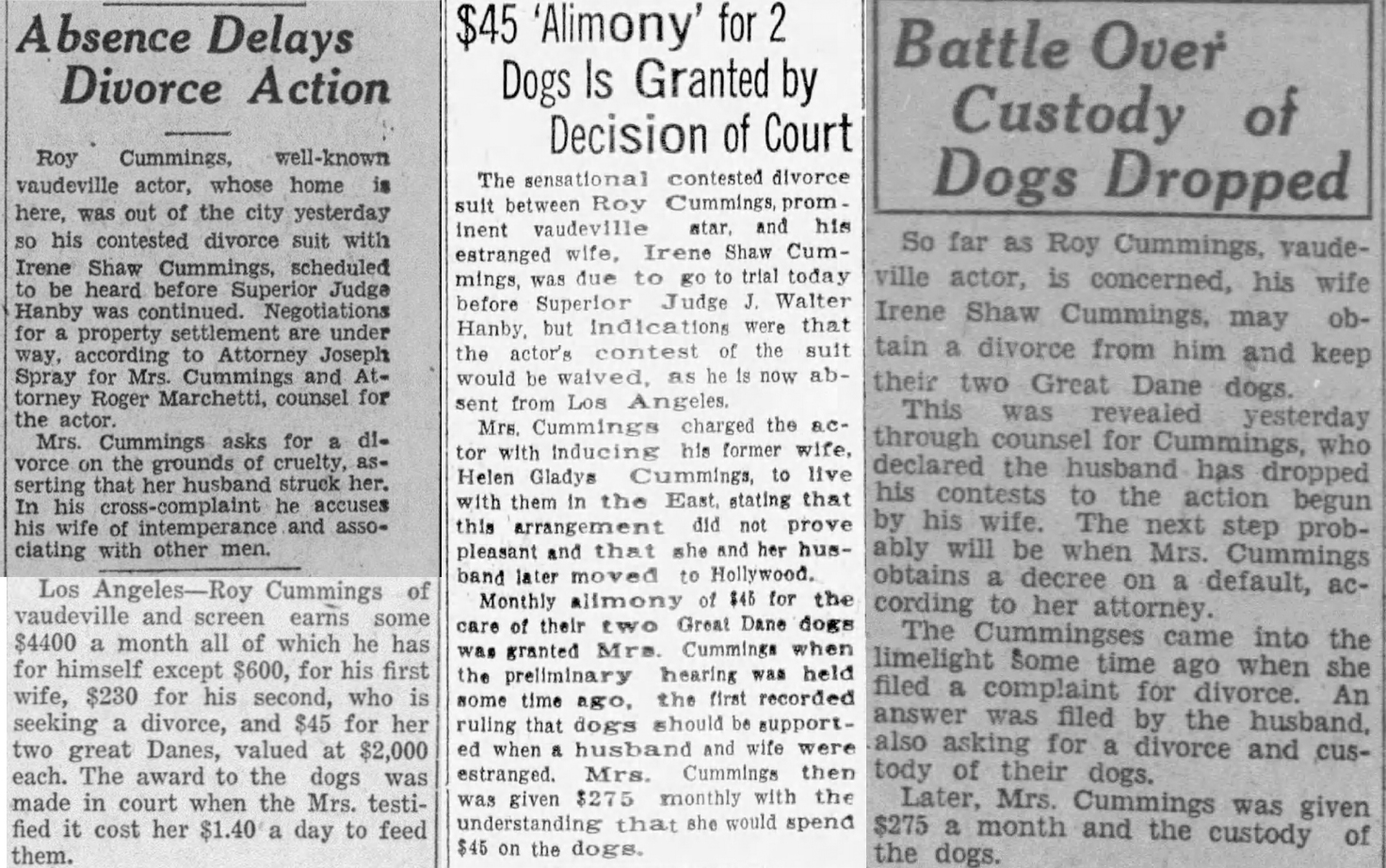
Irene filed for divorce in 1928 on the grounds of cruelty, accusing Roy of striking her and bringing random women into their home. He also accused her of her own affairs. I mean, can you blame her? Get outta there, Irene! Go find that kindly stagehand I imagined. One of their biggest ongoing, headline grabbing disputes was the fight for custody of their 2 dogs. Irene won, and was granted a separate alimony for their care.
But of course, it’s didn’t end there.
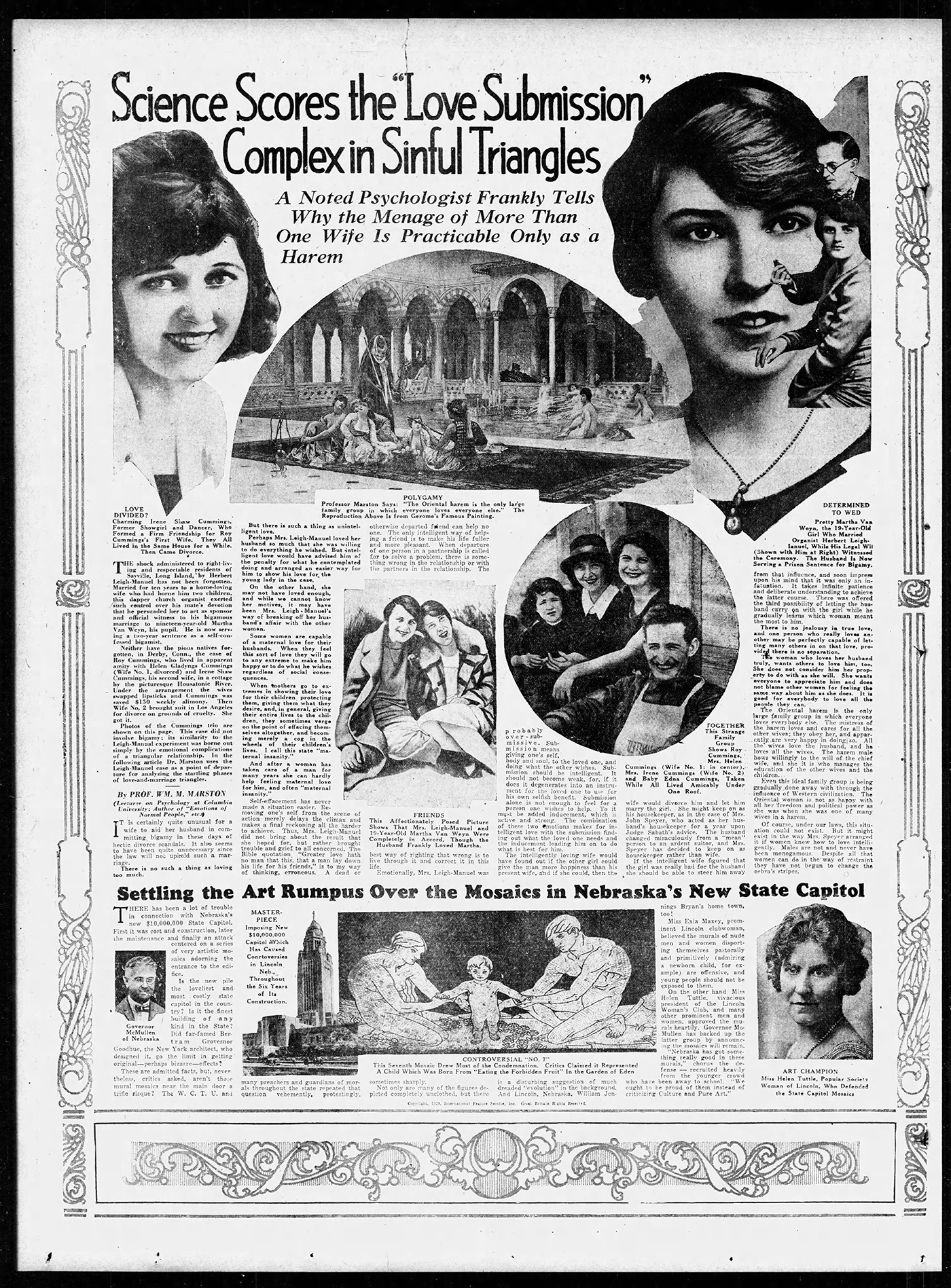
Unable to ever escape the scrutiny of their former, unique living situation, the “love triangle” of Roy, Helen, and Irene once again made national news as psychologists weighed in on why it went wrong. Please note that said psychologist asserts having more than one wife only makes sense if its a harem. If it’s purely economical and platonic, it just won’t work! It didn’t end there, because…
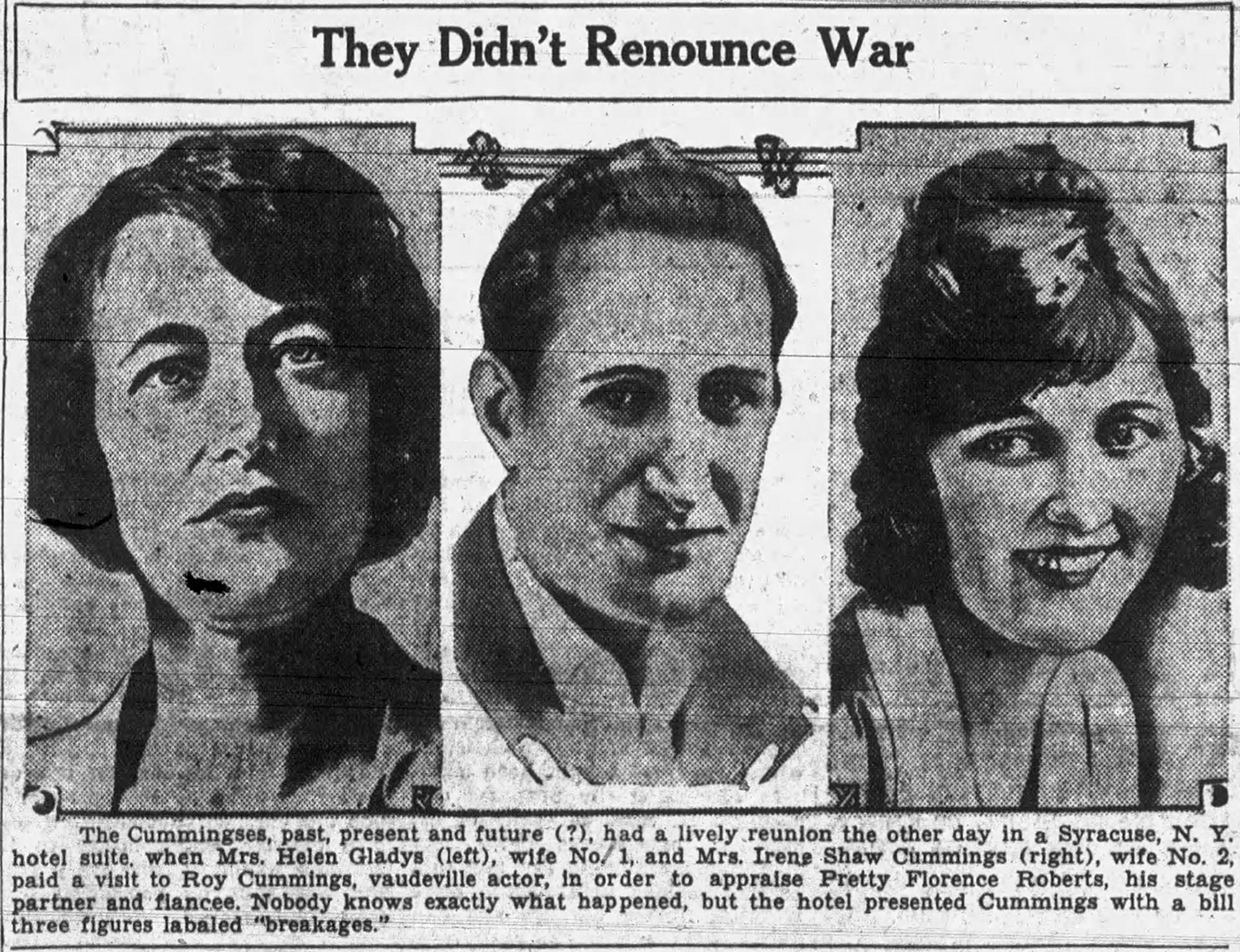
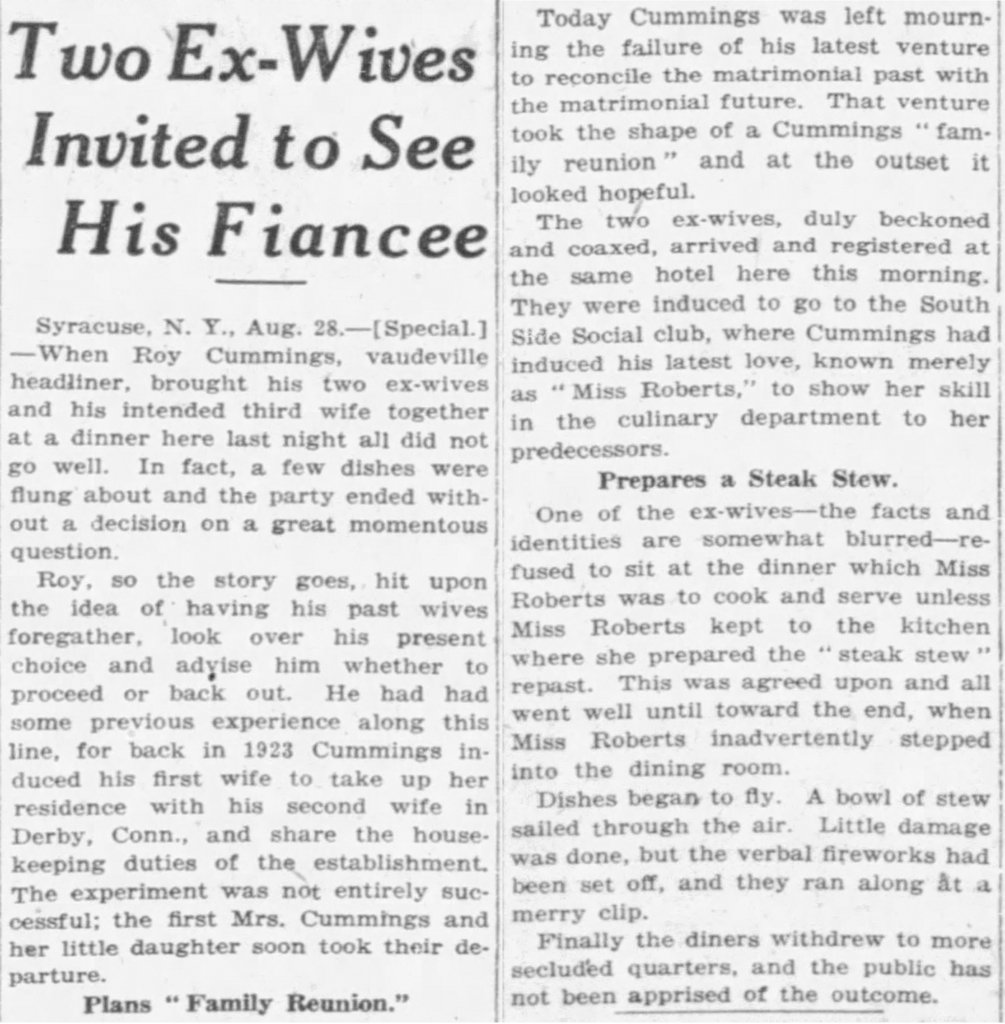
…before their divorce was even finalized. Roy met future wife #3. Seeking wife #1 and wife #2’s approval, he set up a dinner date for them to meet his fiancée. After 1 and 2 got along so famously, maybe he thought he’d have the same luck with 3? Allegedly, it didn’t go well. This seems like a given, considering he and Irene were still hashing out the details of their divorce, dog custody, and alimony in court. Future wife #3 made a nice steak stew to meet the women who preceded her. And the poor dear was not received well. One article claimed that “A bowl of stew sailed through the air.”
This was my favorite description of their ill-fated meeting:
“Nobody knows exactly what happened, but the hotel presented Cummings with a bill three figures labeled ‘breakages.'”
I still don’t know much about Irene Shaw Cummings beyond her vaudeville career, which was written about but rarely expanded upon, her unusual marriage, and highly publicized divorce — and I know nothing of Julius Duggar, an alias. So I probably never will. I suspect that a woman who lived much of her life in the papers, as a performer on stage and a character in a sensationalized marriage, wanted to keep some parts of her life private.
In my silly, pre-code story of the star crossed love affair between a vaudeville star and a humble stagehand, Julius Duggar is one of those tucked away secrets that was purely hers. It could’ve been an easily explainable inside joke. He may have been nothing more than a friend. Either way, I decided to let it go. His identity was probably kept private for a good reason. Having read hundreds of articles about an otherwise stranger, it felt greedy to pry beyond the public headlines. The truth of her story was an even better gift than the one I made up. And she was as fascinating as I hoped she would be. I still hope to learn more about her post-Roy Cummings life. But I’m also content that I recovered more about her than I ever thought I would.
Against every impulse to keep digging, I let the dust settle on . I’ll let him remain Irene’s secret. She deserves something all her own.

